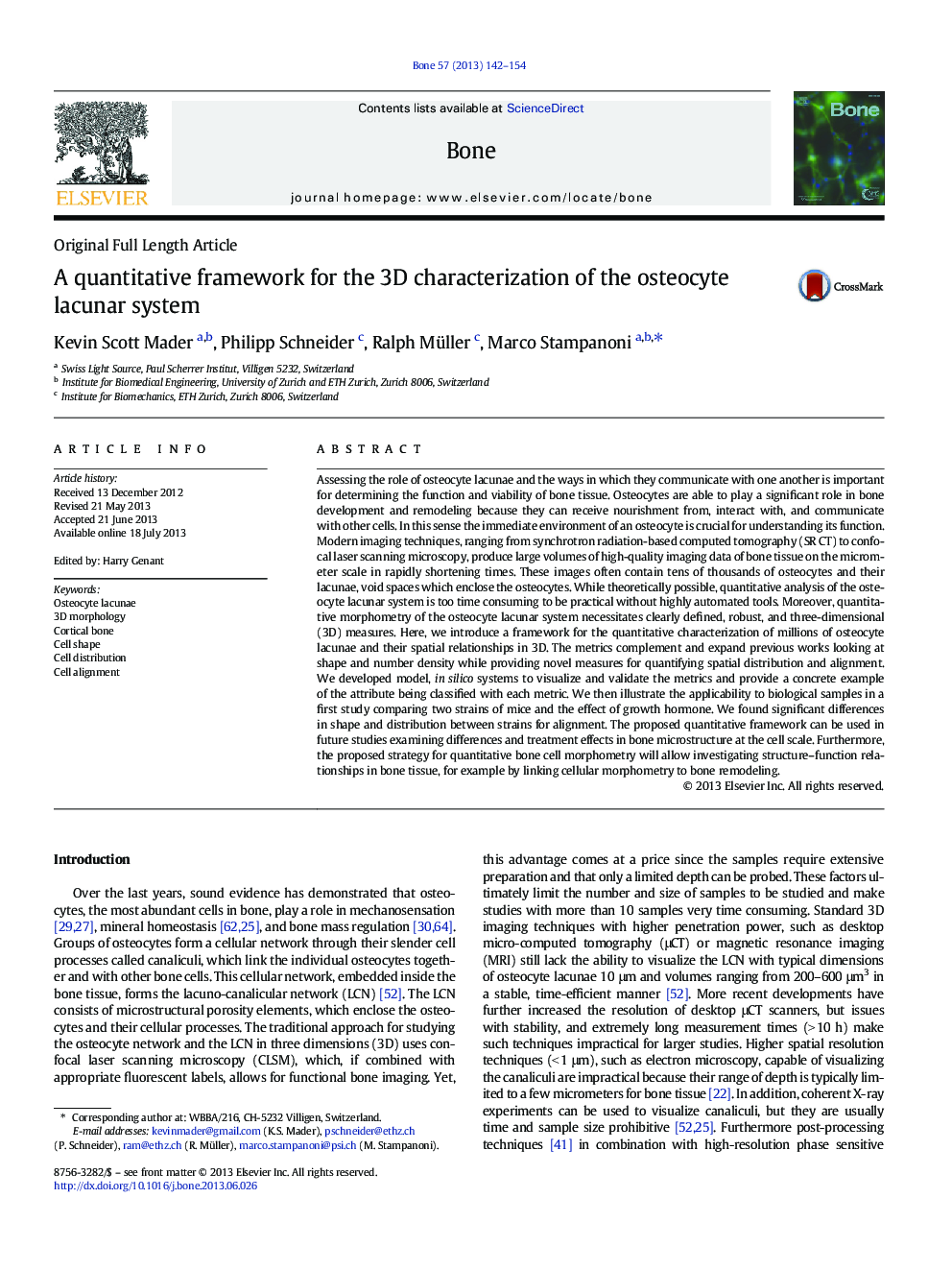| کد مقاله | کد نشریه | سال انتشار | مقاله انگلیسی | نسخه تمام متن |
|---|---|---|---|---|
| 5890867 | 1153261 | 2013 | 13 صفحه PDF | دانلود رایگان |

- A framework was developed for quantitatively analyzing osteocyte lacunae.
- 3D tensor-based metrics are used to quantify shape, distribution, and alignment.
- Significant microstructural differences are present between C3H and B6 mice.
- The presence of growth hormone amplifies several of these differences.
- Despite differences in spatial distribution, metrics like grouping remain constant.
Assessing the role of osteocyte lacunae and the ways in which they communicate with one another is important for determining the function and viability of bone tissue. Osteocytes are able to play a significant role in bone development and remodeling because they can receive nourishment from, interact with, and communicate with other cells. In this sense the immediate environment of an osteocyte is crucial for understanding its function. Modern imaging techniques, ranging from synchrotron radiation-based computed tomography (SR CT) to confocal laser scanning microscopy, produce large volumes of high-quality imaging data of bone tissue on the micrometer scale in rapidly shortening times. These images often contain tens of thousands of osteocytes and their lacunae, void spaces which enclose the osteocytes. While theoretically possible, quantitative analysis of the osteocyte lacunar system is too time consuming to be practical without highly automated tools. Moreover, quantitative morphometry of the osteocyte lacunar system necessitates clearly defined, robust, and three-dimensional (3D) measures. Here, we introduce a framework for the quantitative characterization of millions of osteocyte lacunae and their spatial relationships in 3D. The metrics complement and expand previous works looking at shape and number density while providing novel measures for quantifying spatial distribution and alignment. We developed model, in silico systems to visualize and validate the metrics and provide a concrete example of the attribute being classified with each metric. We then illustrate the applicability to biological samples in a first study comparing two strains of mice and the effect of growth hormone. We found significant differences in shape and distribution between strains for alignment. The proposed quantitative framework can be used in future studies examining differences and treatment effects in bone microstructure at the cell scale. Furthermore, the proposed strategy for quantitative bone cell morphometry will allow investigating structure-function relationships in bone tissue, for example by linking cellular morphometry to bone remodeling.
Journal: Bone - Volume 57, Issue 1, November 2013, Pages 142-154